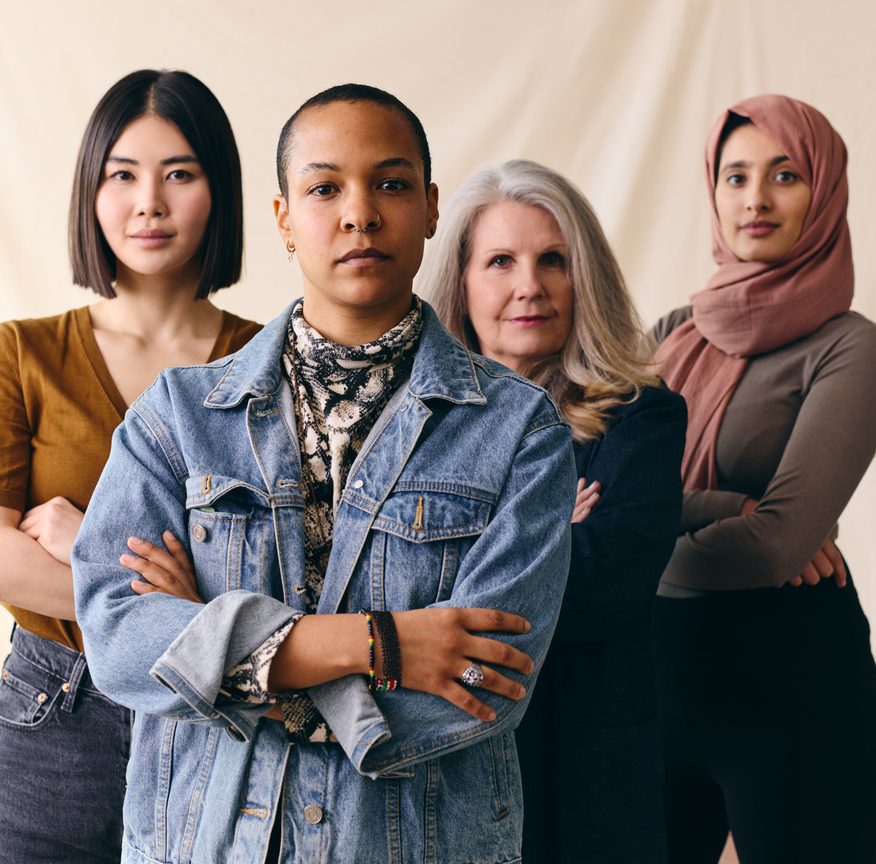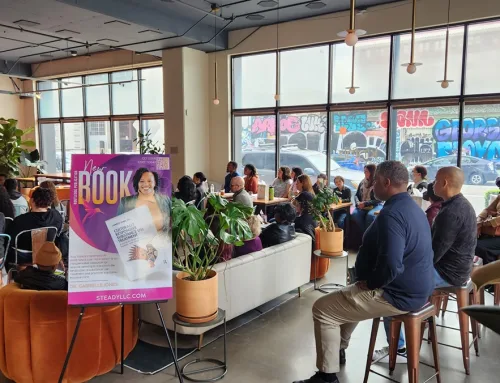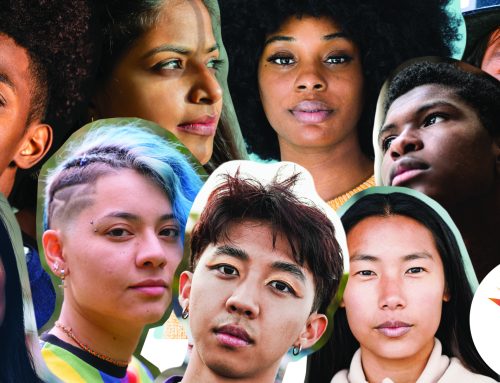Part 1 of this blog discussed why psychedelic-assisted treatment for race-based trauma is dangerous for clients who experience race-based trauma. To learn more, look at “Psychedelic Assisted Treatment for Race-Based Trauma-A Dangerous Concept”.
After reading part 1 though, it may leave professionals feeling lost, overwhelmed, or hopeless about what can be done to treat race-based trauma. Part 2 will identify ways to appropriately address race-based trauma from a culturally responsive lens at the direct-care and system levels.
To understand how to address race-based trauma, it is important to understand what it means to be “culturally responsive”. Participating in culturally responsive work means looking at the needs of the individual with whom you are working, from their cultural perspective, and building interventions based on that information. As a professional, it is important to have “tools” in your toolbox, but if you don’t know how to use them, having them may not be very helpful in your work. The three points below will present a culturally responsive “introductory toolbox” with instructions on how to utilize each tool to provide more equitable and inclusive treatment to historically minoritized communities.

Provider-Level Interventions
1. “Be Humble”: Cultural Humility
Kendrick Lamar said it best. Cultural humility is a phrase that is often used but rarely understood in practice, which tends to make it less useful when engaging in therapy with someone from a minoritized community. Humility in treatment looks like sharing with your client that you may not share the same experiences in life. Do not confuse this with self-disclosure. Cultural humility means addressing your privilege in the room, in the moment, at the beginning. If you believe you do not have privilege because you identify with the BIPOC community, I encourage you to take a moment and do a quick search on the following: “How does racism look for [insert identity to which you do not belong] people”. Hopefully, in doing that search you discovered something new.
Cultural humility is developing a willingness to accept that you can learn something new. This is not appropriation. The goal in practicing cultural humility is not to learn about a different culture and attempt to align with someone based on what you learned. It is not showing your “understanding” of an Asian person’s culture by purchasing wall art in Mandarin to display on your office wall, putting a Día De Los Muertos Skull on your desk on November 1st, or casually referencing a nearby Black-Owned store you frequent to your Black client. Practicing cultural humility does not look like removing your assumptions of a client when you see them. Cultural humility looks like acknowledging those assumptions, bringing the subconscious into consciousness, and letting your client know that you are willing to have those difficult conversations. It looks like inviting your client to “call you in” when you make a mistake (because if you are humble, you know mistakes will be made).
2. “A Long Walk”: Culturally Responsive Self-Care
It is well documented that physical activity and being outdoors is conducive to improved mental health (Novotney, 2008; Zschucke, 2013), but as a provider, the way in which you offer that self-care practice should be in alignment with your client’s culture. In practice, this may look like inquiring about what your client would enjoy doing outdoors instead of giving them suggestions of what they can do outdoors.
Taking this approach gives your client agency and it removes the feeling of an individual “teaching” you about their culture. To find out how potential self-care practices might look for your client, you can also impart tool #1, cultural humility, to ask them. Additionally, providing culturally responsive self-care options include considering the race-based trauma that might be associated with commonly suggested self-care practices. An example of this may be working with a LatinX client (He/Him) who is in executive leadership. This client has disclosed that his employment has been saturated with people assuming he did not have the position or title he carried, being met with surprise when he shared his academic background and often being too afraid to engage in self-care because he has been mistaken for being “lazy”. These descriptions are forms of microaggressions (Sue, 2019), which can lead to race-based trauma. Suggesting to your client that he would benefit from “taking a break” ignores these external factors that he may experience if he were seen in his work environment “taking a break”.
Instead, offering self-care activities that take into consideration what he has reported would be more culturally responsive. An example of this may be offering the self-care practice of listening to his favorite genre of music while he is working or writing culture-specific affirmations and keeping them on his desk where he can easily see them. A critical aspect of providing culturally responsive self-care practices involves truly listening to what your client experiences in their day-to-day life and using that information to inform what type of self-care practices are in alignment with your client’s values. Additionally, you want to ensure your self-care practice suggestions are culturally safe for your client.

3. “Where is The Love?”: Acknowledgement of the Injustice
Color-Blind Racial Ideology (CBRI) is characterized in four ways: denial of race, blatant racial issues, institutional racism, and White privilege (Neville et al., 2013).
These four areas of CBRI contribute to the lack of acknowledgment of injustice that plagues individuals from BIPOC communities. It contributes to gaslighting, poor treatment outcomes for BIPOC-identified individuals, and race-based incidents that contribute to race-based trauma. Unfortunately, many well-meaning therapists do not realize how they contribute to CBRI in their practice simply by not acknowledging the injustices occurring in the lives of their clients.
Again, practicing cultural humility is important here, because privilege includes not having to be aware of issues that do not pertain to your identity. As a provider, taking the time to raise your own awareness of what social issues are occurring that may impact your clients goes a long way. For example, throughout the Black Lives Matter (BLM) movement, there have been several instances of televised court cases, not-guilty verdicts, and protests highlighting the lack of consideration of Black people and Black bodies. Simultaneously, there have continued to be murders of Black people. As a non-Black provider, you may know about BLM, and you may even support the movement financially and via your social media platform, but you don’t understand why your Black client is so distraught in this particular session. It turns out, another Black person was murdered at the hands of police. You didn’t hear about it because it is not being covered nationally. Being supportive of other cultures and identities is one thing, taking another step and paying attention to what might be going on in communities other than your own is an added step.
To clarify, this is not to say you need to be in the know about everything all the time. The goal here is to become more attuned to your client’s identity and make an effort to see what might be going on in their community that is contributing to racism, injustice, and their presentation in the room with you. At the very least, when you do not know what is going on, acknowledge and validate the injustices to which individuals from BIPOC communities are subject.
System-Level Interventions
1. “Fight the Power”: Use your platform to elevate the voices of your marginalized clients.
The Department of Children, Youth, and Family Services advocates on behalf of these vulnerable populations. The role of these departments is to ensure children, youth, and families are safe and cared for regardless of socioeconomic status. It is a system filled with individuals that use the platform to raise awareness for those who may not be able to do so themselves.
As a provider, you have a unique role in advocacy and system change. Many non-profit organizations committed to dismantling racism and racial injustice would benefit from having mental health providers serve on their boards, provide trainings to their staff, and increase the visibility of their organization through social media or provider networks. Using your platform, no matter how big or small, to help raise awareness of racial injustice and systemic racism puts your good intentions into action. Point 3 of individual interventions pairs well with this system intervention because in raising awareness, you are inherently more likely to see what is occurring in minoritized and marginalized communities, which will help to raise your own awareness.
2. Advocate through your local, state, and national professional organizations
There are countless workgroups, taskforces, and committees that need more professionals to get involved. The African proverb, “many hands make light work” highlights that the more people involved in moving a cause forward, the easier it will be to make systemic change.in moving a cause forward, the easier it will be to make systemic change. The American Psychological Association, National Association of Social Workers, American Association for Marriage and Family Therapy, and the American Psychiatric Association are a few of many national organizations constantly seeking individuals and are in dire need of individuals who are willing to advocate for systemic change.
3. “Chained to the Rhythm”: Educate yourself, then invite your colleagues to educate themselves

This point can be seen as a provider-level intervention and a system-level intervention because in educating yourself, you become a resource to colleagues who may feel ill-equipped to seek the information needed to become more culturally aware or responsive to their clients. Often providers do not know that there are resources available to learn about racism and racist practices without placing responsibility on BIPOC individuals to educate. The Association of Black Psychologists, National Latinx Psychological Association, Asian American Psychological Association, Society of Indian Psychologists, and the American Arab, Middle Eastern, and North African Psychological Association are a few organizations that provide research and education related to their respective communities. These organizations were birthed as a response to racism and they exist to break systemic barriers.
Take time to read the research provided by these organizations and share that information with your colleagues. Intentionally invite your colleagues to educate themselves if/when you hear them engage in a microaggression or if their privilege prevents them from seeing issues that BIPOC individuals face. Take a moment to think about the decades of harm done to minoritized communities, coupled with what still occurs today before diagnosing a BIPOC individual with a mental health condition that may be better explained by racism.
Though this is not an exhaustive list, it is a starting point if you are having trouble identifying ways to contribute to fighting injustice. Using these “introductory tools” will help build your culturally responsive therapeutic practice, and it will increase your cultural awareness. These “tools” are ways for you to put words into action.
References
Burkard, A. W., Edwards, L. M., & Adams, H. A. (2016). Racial color blindness in counseling, therapy, and supervision. In H. A. Neville, M. E. Gallardo, & D. W. Sue (Eds.), The myth of racial color blindness: Manifestations, dynamics, and impact (pp. 295–311). American Psychological Association. https://doi.org/10.1037/14754-018
Crosby, S. D., Kniffley, S. D., Jr., Mitchell, B., Jones, K. V., Middleton, J., Caine, A., & Vides, B. (2022). “Decolonizing mental health”: Exploring insights from clinicians trained in Kniffley Racial Trauma Therapy. Practice Innovations, 7(3), 280–292. https://doi.org/10.1037/pri0000187
Neville, H. A., Awad, G. H., Brooks, J. E., Flores, M. P., & Bluemel, J. (2013). Color-blind racial ideology: Theory, training, and measurement implications in psychology. American Psychologist, 68(6), 455–466. https://doi.org/10.1037/a0033282
Novotney, A. (Mar 2008). Getting back to the great outdoors. Monitor on Psychology, 52-54. https://doi.org/10.1037/e531102009-026
Sue, D. W., Alsaidi, S., Awad, M. N., Glaeser, E., Calle, C. Z., & Mendez, N. (2019). Disarming racial microaggressions: Microintervention strategies for targets, White allies, and bystanders. American Psychologist, 74(1), 128–142. https://doi.org/10.1037/amp0000296
Wilson, B. L., & Wolfer, T. A. (2022). Improving relations between police and African American neighborhoods: A positive deviance approach. Psychology of Violence, 12(4), 270– 279. https://doi.org/10.1037/vio0000426
Zschucke, E., Gaudlitz, K., & Ströhle, A. (2013). Exercise and physical activity in mental disorders: Clinical and experimental evidence. Journal of Preventive Medicine and Public Health, 46 (Suppl. 1), S12–S21. http://dx.doi.org/10.3961/jpmph.2013.46.S.S12




